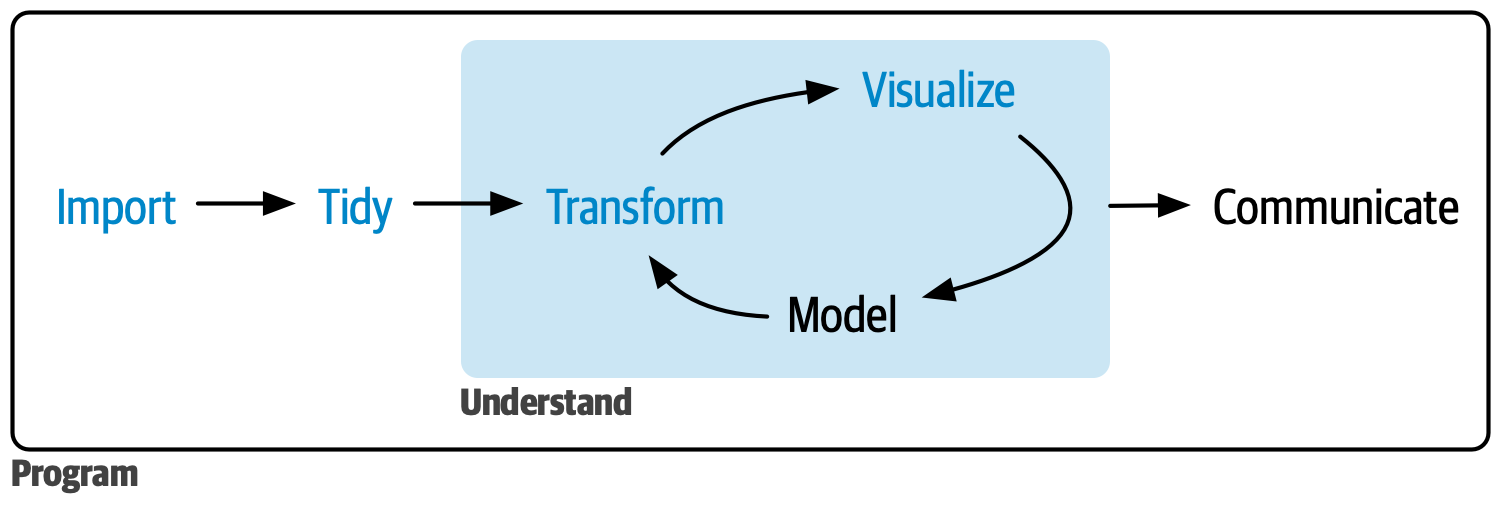Instructor

Master of Environmental Data Science (MEDS)

Artwork by Allison Payne
The generation and analysis of environmental data is often a complex, multi-step process that may involve the collaboration of many people. Increasingly, data scientists use tools that document and help to organize workflows to ensure reproducibility, shareability, and transparency of the results. This course will introduce students to the conceptual organization of workflows (including code, documents, and data) as a way to conduct reproducible analyses.
These concepts will be combined with the practice of various software tools and collaborative coding techniques to develop and manage multi-step analytical workflows as a team.

Conceptual model of an analytical workflow. Source: R for Data Science
Each day will (approximately) follow this format.
| Time | Activity |
|---|---|
| 10:00-10:50 | Lecture 1 |
| 10:50-11:00 | Break |
| 11:00-12:00 | Interactive session 1 |
| 12:00-1:00 | Lunch |
| 1:00-1:50 | Lecture 2 |
| 1:50-2:00 | Break |
| 2:00-3:30 | Interactive session 2 |
| 3:30-4:00 | Flex time |
| 4:00-4:50 | Q&A with instructors (as needed) |
EDS 214 was previously taught by Julien Brun and the current iteration draws heavily on his planning, course materials, and teaching.